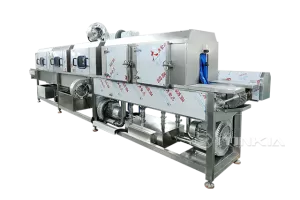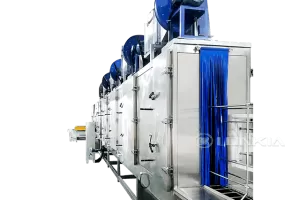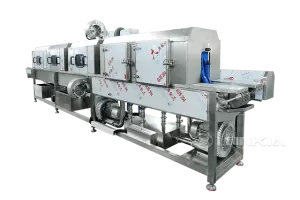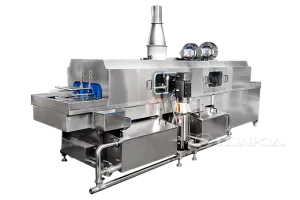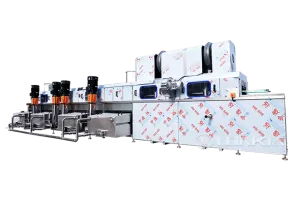Pallet washing is a crucial process in industries like food processing, pharmaceuticals, logistics, and manufacturing to maintain hygiene, comply with regulations, and prevent cross-contamination. However, many businesses face challenges such as ineffective cleaning, high water and energy consumption, equipment malfunctions, and operational inefficiencies.
In this article, we’ll explore common problems with pallet washing and provide practical solutions to optimize the process, improve efficiency, and reduce costs.
🔹 Incomplete Cleaning and Residue Buildup
✅ The Problem:
Grease, oil, and organic residues are not fully removed.
Dirt and contaminants accumulate in corners and textured surfaces.
Some pallets require re-washing, increasing time and costs.
🔧 Solutions:
✔ Use high-pressure spray nozzles to reach all pallet surfaces.
✔ Adjust water temperature – Higher temperatures (60-85°C) dissolve grease and oils more effectively.
✔ Select the right detergent – Alkaline cleaners work best for oil-based contaminants, while enzyme-based detergents help break down organic matter.
✔ Incorporate a pre-wash cycle for heavily soiled pallets before the main wash.
🔹 Example:
Switching to rotating spray nozzles improved washing coverage by 30% in a logistics facility, reducing re-washing needs.
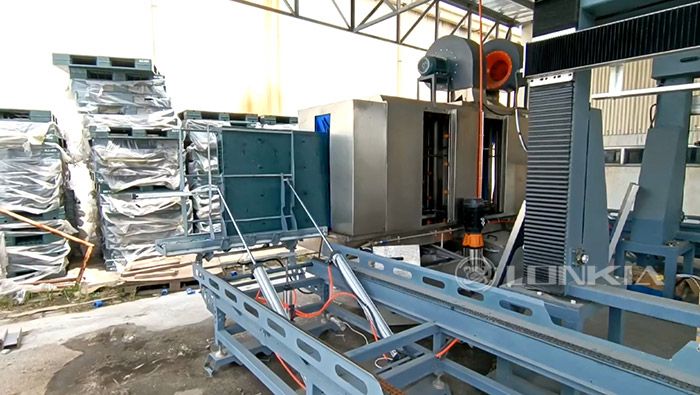
🔹 High Water and Energy Consumption
✅ The Problem:
Excessive water usage leads to high utility costs.
Heated washing cycles consume too much energy.
Inefficient drainage results in water waste.
🔧 Solutions:
✔ Install water recycling and filtration systems to reuse water efficiently.
✔ Optimize water pressure and flow rates – Reduce water flow without compromising cleaning effectiveness.
✔ Use energy-efficient heating systems to lower power consumption.
✔ Implement heat recovery systems – Capture and reuse heat from wastewater to preheat incoming water.
🔹 Example:
A food processing plant installed a water filtration system, reducing water consumption by 50% and lowering costs.
🔹 Slow Washing Process and Production Delays
✅ The Problem:
Manual washing takes too long and slows operations.
High washing cycle times cause bottlenecks in the production line.
Insufficient drying time leads to wet pallets, delaying reuse.
🔧 Solutions:
✔ Automate the pallet washing process to reduce manual handling and improve efficiency.
✔ Use high-speed conveyorized pallet washers to process multiple pallets continuously.
✔ Optimize drying with air-blower systems instead of heat drying to speed up the process.
🔹 Example:
Upgrading to an automated pallet washer helped a beverage manufacturer cut washing time by 40%, improving workflow.
🔹 Cross-Contamination Risks
✅ The Problem:
Dirty water from previous cycles contaminates clean pallets.
Inadequate sanitation allows bacteria and mold growth.
Inefficient drying leaves moisture, increasing bacterial risks.
🔧 Solutions:
✔ Use separate wash and rinse zones to ensure contaminated water does not mix with clean pallets.
✔ Regularly sanitize pallet washing equipment to prevent bacterial buildup.
✔ Increase drying efficiency – Ensure pallets are completely dry before storage or reuse.
🔹 Example:
A meat processing plant added UV sanitation to their drying zone, eliminating 99.9% of bacteria on washed pallets.
🔹 Equipment Breakdowns and Maintenance Issues
✅ The Problem:
Clogged spray nozzles reduce cleaning efficiency.
Heating elements malfunction, affecting water temperature.
Mechanical failures lead to downtime and costly repairs.
🔧 Solutions:
✔ Schedule regular maintenance to clean nozzles, filters, and pumps.
✔ Use sensor-based monitoring to detect temperature fluctuations and adjust in real time.
✔ Train staff on proper equipment handling to prevent accidental damage.
🔹 Example:
A logistics company implemented a preventive maintenance schedule, reducing unexpected washer breakdowns by 60%.
🔹 Inconsistent Cleaning Due to Pallet Variability
✅ The Problem:
Different pallet materials (wood, plastic, metal) require different washing settings.
Some pallets have complex shapes that standard nozzles can’t reach.
Lightweight pallets move during washing, reducing cleaning effectiveness.
🔧 Solutions:
✔ Adjust wash cycle settings based on pallet material and contamination level.
✔ Use adjustable spray angles or rotating nozzles for better cleaning coverage.
✔ Incorporate a securing system to hold lightweight pallets in place during washing.
🔹 Example:
A distribution center added variable-speed conveyor settings, ensuring all pallet types were properly cleaned without movement issues.
🔹 Conclusion: Optimize Pallet Washing for Maximum Efficiency
Addressing common pallet washing problems helps businesses improve efficiency, reduce costs, and enhance hygiene compliance. By implementing:
✅ High-pressure, temperature-controlled washing for better cleaning results
✅ Water and energy conservation strategies to lower operating expenses
✅ Automated systems to speed up processing and reduce labor costs
✅ Sanitation protocols to prevent contamination risks
✅ Routine maintenance to avoid unexpected breakdowns
Businesses can create a more reliable and cost-effective pallet washing system.
At LONKIA Machinery, we provide advanced pallet washing solutions designed to solve industry challenges and improve operational efficiency. Contact us today to find the perfect pallet cleaning system for your facility! 🚀


